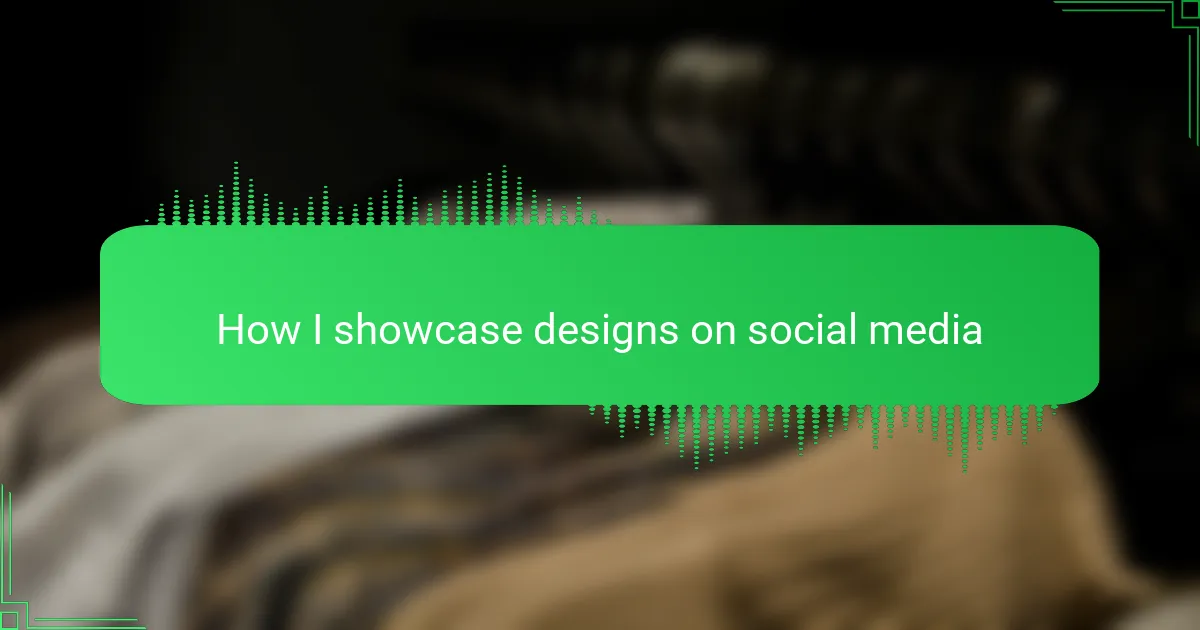Key takeaways
- Social media is a vital platform for sharing t-shirt designs, allowing for direct interaction and feedback from the audience.
- Choosing the right platforms, such as Instagram, Pinterest, and TikTok, enhances visibility and audience engagement.
- Effective presentation of designs, including high-quality images and engaging storytelling, is essential for capturing attention.
- Collaborating with influencers and participating in niche communities fosters connections and expands reach within targeted audiences.
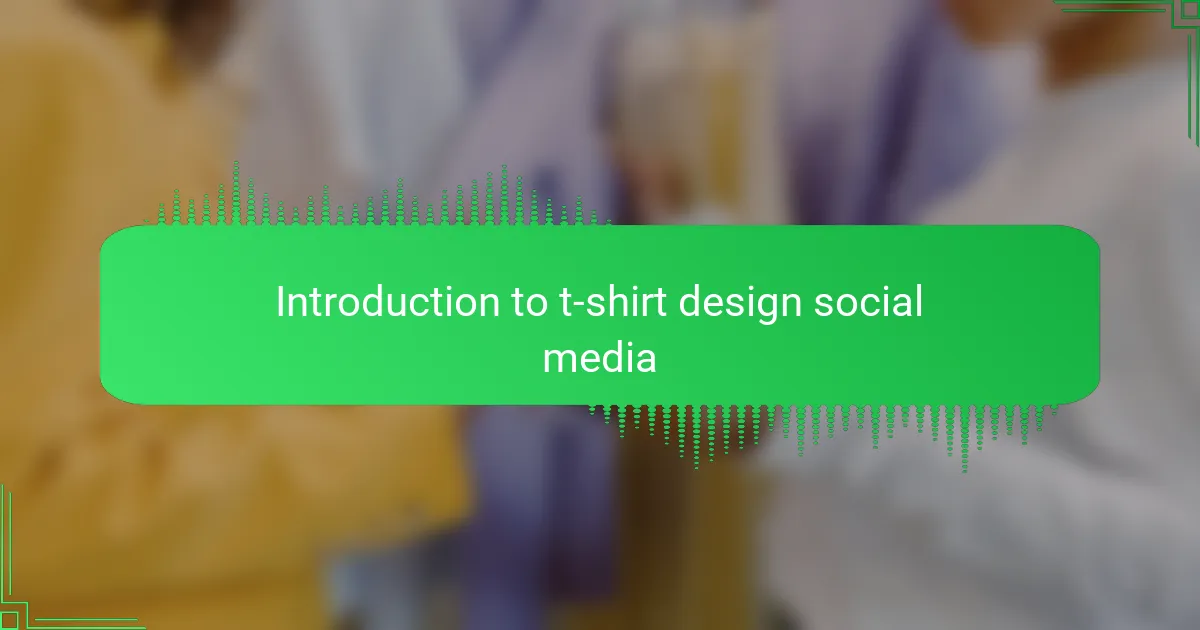
Introduction to t-shirt design social media
Social media has completely transformed how we share and celebrate t-shirt designs. I remember the first time I posted one of my designs online—I was nervous but excited to see how people would react. Isn’t it amazing how a simple image can spark conversation and connect creative minds across the world?
When I started, I realized that social media isn’t just a gallery; it’s a dynamic space where feedback, trends, and community shape the way designs evolve. Have you ever noticed how a single comment or like can boost your confidence or inspire your next idea? That interaction is what makes sharing designs online so powerful and personal.
Designing is one thing, but showcasing those creations in the vibrant world of social media adds an entirely new layer of storytelling. It’s like inviting others to step into your creative process, and that exchange makes the whole journey more meaningful for me. How often do you think about the story behind a t-shirt design as you scroll through your feed?
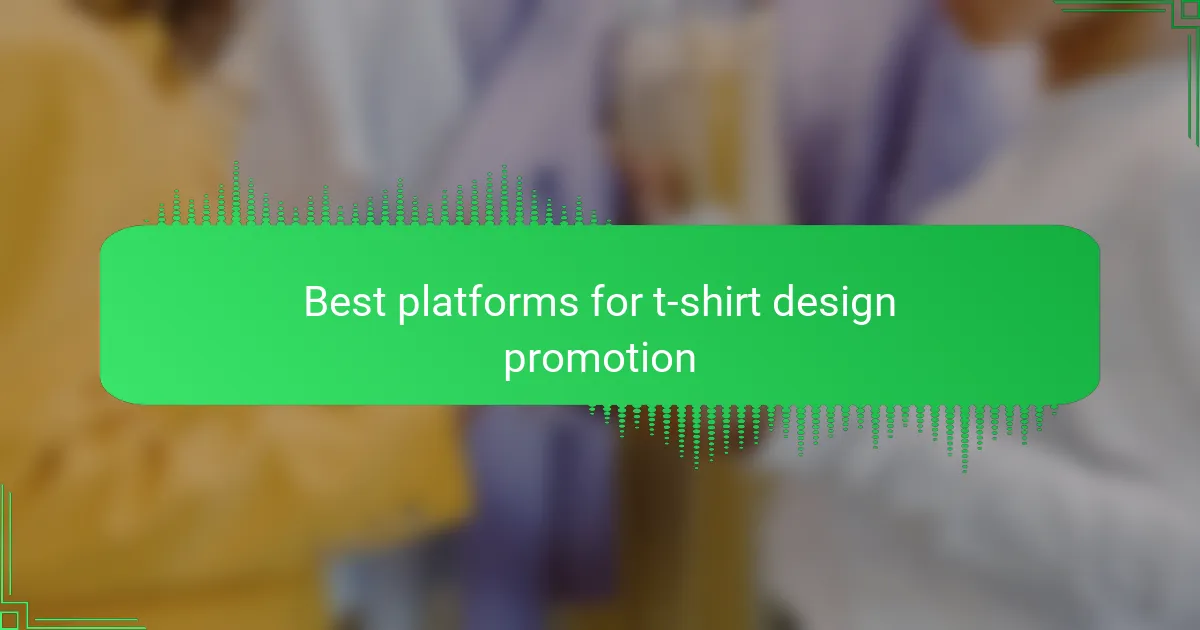
Best platforms for t-shirt design promotion
Promoting t-shirt designs on social media is all about choosing platforms where visual content thrives and your target audience hangs out. In my experience, Instagram’s focus on images and reels makes it a go-to for designers, while Pinterest is perfect for showcasing collections and inspiring potential customers. Meanwhile, TikTok’s short videos offer a dynamic way to demonstrate your design process and spark engagement.
| Platform | Strengths for T-Shirt Design Promotion |
|---|---|
| Highly visual; strong community of creatives; effective use of stories and reels for behind-the-scenes content. | |
| Great for mood boards and collections; attracts users searching for inspiration; long content lifespan. | |
| TikTok | Viral potential with short videos; showcases design process and personality; younger, trend-driven audience. |

Preparing your t-shirt designs for sharing
Getting your t-shirt designs ready to share on social media is more than just saving a file. From my experience, the way a design is presented can make or break the initial impact. Ensuring your images are high-quality and optimized for each platform helps your work stand out exactly as you intended.
I’ve found that preparing multiple versions of your design—like a close-up shot and one showing the t-shirt worn—adds context and engages viewers emotionally. Here’s a checklist I always follow before posting:
- Use high-resolution images (at least 1080 x 1080 pixels)
- Optimize file size for quick loading without losing quality
- Create lifestyle shots showing the t-shirt in real settings
- Include transparent background versions for versatility
- Add branded watermarks subtly to protect your work
- Prepare platform-specific dimensions (Instagram, Facebook, Pinterest)
- Double-check colors to ensure they look true on screen
Following these steps has consistently helped me generate more interest and genuine engagement from my audience.
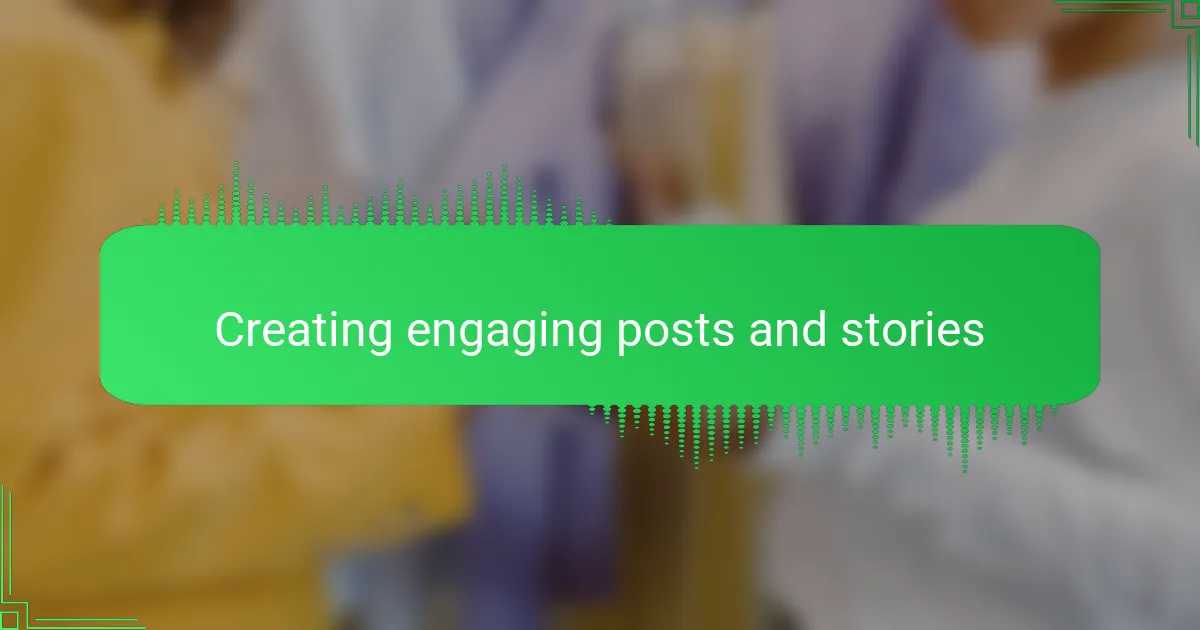
Creating engaging posts and stories
Crafting engaging posts and stories is where your t-shirt designs really come alive on social media. I’ve noticed that adding a little personality—whether through a behind-the-scenes snippet or a quick story about what inspired the design—often sparks more genuine interactions than a simple product shot. Have you ever clicked on a post just because its caption made you pause and think? That’s the kind of connection I aim for.
Timing also plays a crucial role. Posting when your audience is most active can be a game changer, something I learned after a few trial-and-error attempts. Watching the likes and comments climb in real time gave me a real sense of how vibrant and immediate social media engagement can be. It’s almost like hosting a mini event every time you share.
Stories offer a unique space to create immersive experiences with your designs. I personally love using polls or questions in stories to invite followers into the creative process—it feels rewarding to see people genuinely interested in what fuels my work. Have you tried turning your audience into collaborators by asking for their opinions or design tweaks? That level of involvement not only boosts visibility but makes your followers feel valued.
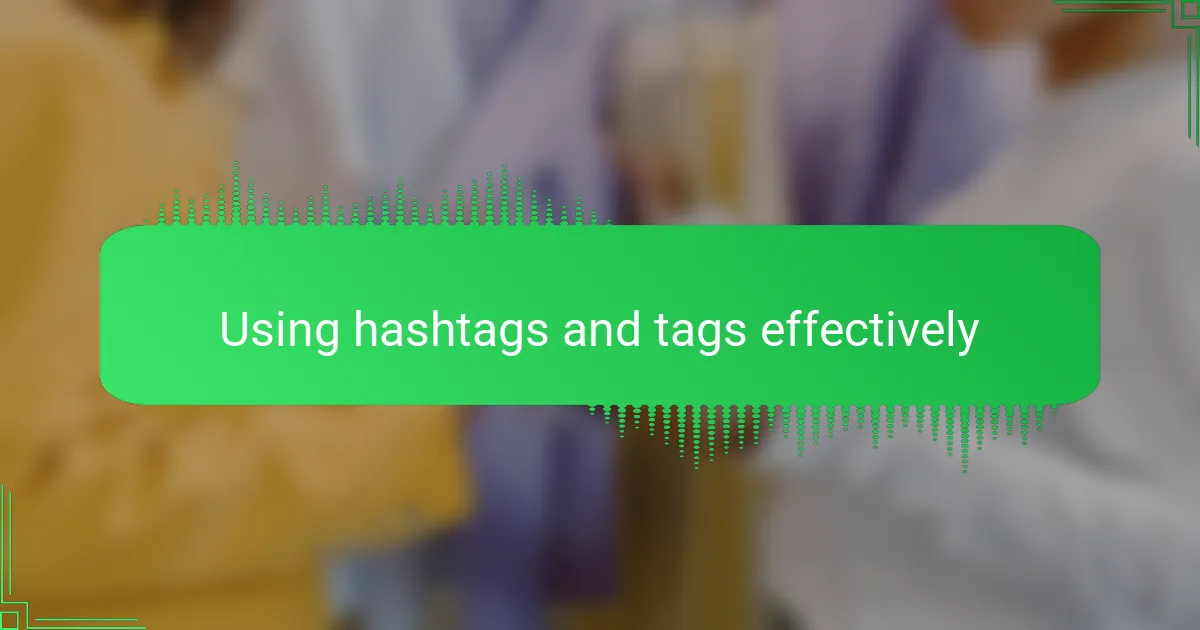
Using hashtags and tags effectively
When I first started using hashtags, I underestimated their power—until I posted a design with a few well-chosen tags and saw my reach multiply overnight. It made me realize hashtags are more than just labels; they’re gateways connecting your work to communities genuinely interested in your style. Have you ever wondered which hashtags bring the right eyes to your designs?
Tagging others is another subtle art I learned over time. I make a point to tag collaborators, influencers, or brands when relevant, which often sparks unexpected conversations and wider sharing. This networking through tags feels like passing your design a friendly nudge into circles it might never reach otherwise.
I’ve noticed that mixing popular hashtags with niche-specific ones creates the best balance between visibility and relevance. For example, pairing #tshirtdesign with something more targeted like #vintagestyletee draws in both broad and focused audiences. Do you think your current tagging strategy is helping your designs find their perfect viewers? It’s worth experimenting—it certainly changed my social media game.
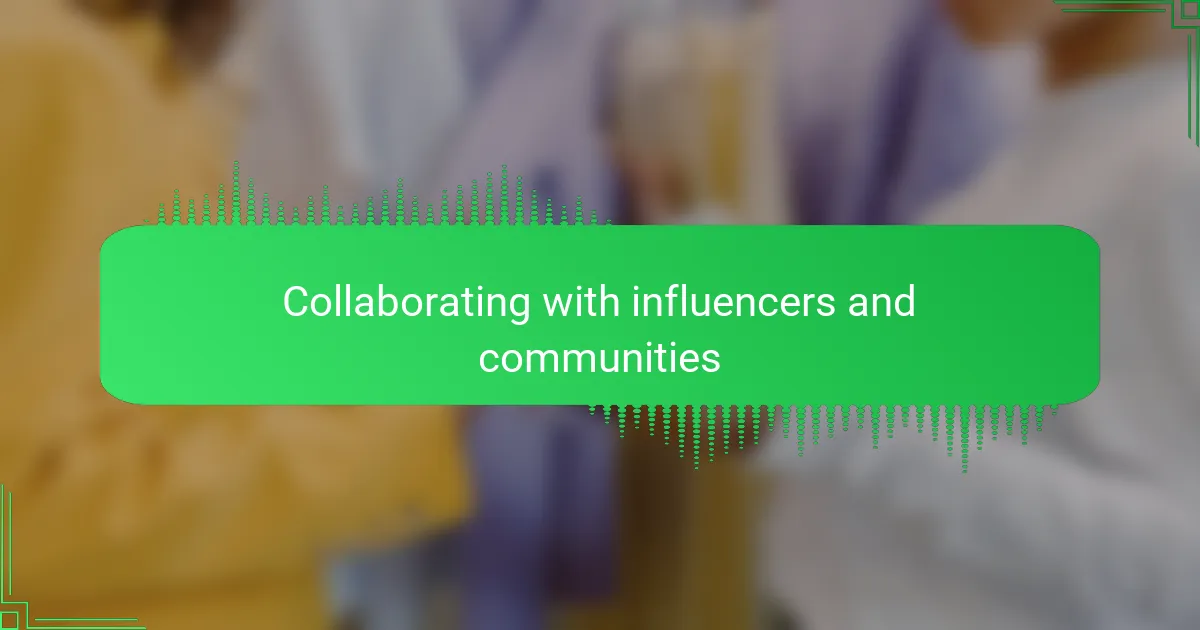
Collaborating with influencers and communities
Working with influencers and communities has been a game changer for how I showcase my t-shirt designs. I remember collaborating with a local influencer whose style perfectly matched my brand—it felt like my designs suddenly had a new voice and wider reach. Have you ever noticed how an influencer’s authentic enthusiasm can make a design feel more relatable and desirable?
Joining niche communities also opened doors I didn’t even know existed. Whether it’s a Facebook group dedicated to indie apparel or a Reddit thread where designers swap tips, these spaces offer real conversations and honest feedback. I often find that sharing there leads to unexpected collaborations and fresh inspiration, turning simple posts into meaningful connections.
In my experience, the key is genuine engagement—not just tagging influencers and hoping for a share, but building relationships over time. I ask questions, celebrate others’ work, and participate actively before proposing any collab. That approach has made my partnerships feel natural and fruitful rather than forced or transactional. How do you think your current outreach efforts measure up in fostering community? It’s something I’m still learning to do better every day.
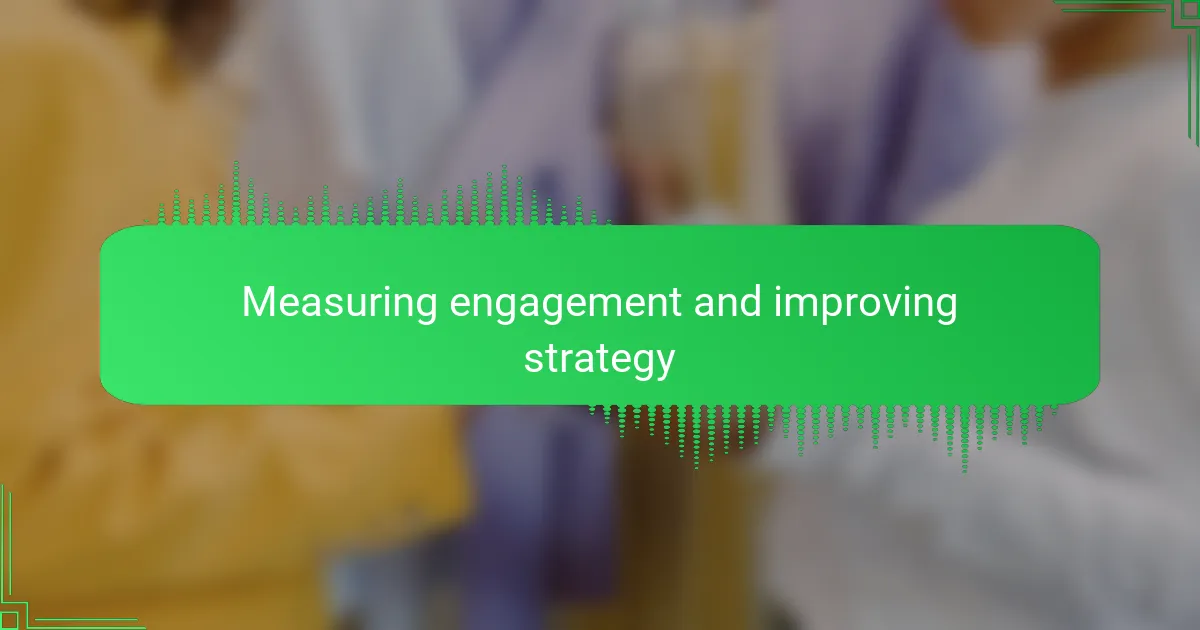
Measuring engagement and improving strategy
Measuring engagement is crucial for understanding which of my t-shirt designs truly resonate with my audience. I’ve found that tracking likes and comments helps, but the real insight comes from analyzing shares and saves—these actions show genuine interest. Once, a design I thought was simple ended up being saved hundreds of times, which surprised me and shifted how I approached future concepts.
To improve my strategy, I regularly review engagement data and test different posting times, captions, and hashtags. For example, switching from generic hashtags to more niche ones brought in a community that gave more meaningful feedback, pushing me to refine my style continuously. Here’s what I focus on when measuring and adjusting my social media approach:
- Track key engagement metrics: likes, shares, comments, and saves
- Analyze which designs get the most interaction and why
- Experiment with posting schedules and content formats
- Use audience feedback to guide new design ideas
- Monitor hashtag performance and adjust accordingly
- Review competitors’ engagement patterns for inspiration
